Insurance
I don’t have vision insurance. However, I’ve heard that some vision conditions are eligible for medical insurance coverage. It that true?
Yes, if you do not have vision insurance, but have medical insurance like Medicare or Blue Cross, for example, and you have been diagnosed with a medical condition like cataracts, or have dry eye syndrome, you may be eligible to use your medical insurance. If you have Medicare, you can be seen for an eye exam using your medical insurance. Your policy’s deductibles, co-pays and co-insurance will still apply. Please call the office with any questions about either your vision or medical coverage.
Contacts
I’m in my late 40s and have realized that I need reading glasses, but I am much more comfortable wearing contacts. What kind of options do I have?
Almost all patients will need some type of vision correction for reading by their late 40s, but a lot of these patients would prefer to wear contact lenses over glasses. You have several choices for contacts, including monovision lenses (where one eye is corrected at a distance, and the other at near) and multifocal contacts. These options are not for everyone, but the best way to determine if it works for you is to have a thorough contact lens exam and fitting to determine the best option for you.
My 11-year old has worn glasses since she was 6 years old. She’s interested in wearing contacts, but I don’t know if she’s old enough.
Many parents ask if their children are ready to wear contacts. While the average age is around 12 or 13, some kids are ready earlier, and some are ready later than that. There is no “right” age. It varies by age and by a child’s responsibility level, and Dr. Penney will discuss readiness when talking to parents on a case-by-case basis. If your child is ready, we suggest that they wear daily contact lenses, which are thrown out at the end of each day, and a new pair is worn the next day. This greatly reduces the risk of improper use, improper care and infection.
Can I wear contacts even if I have astigmatism?
The majority of patients with astigmatism are able to successfully wear contact lenses. A high percentage of patients with astigmatism are able to wear soft contact lenses for astigmatism (or soft toric lenses, as they are often called). Some patients with significantly higher amounts of astigmatism may benefit from a rigid gas permeable lens, or even scleral lenses. This would be determined by Dr. Penney at your comprehensive eye exam and contact lens exam.
LASIK
How do I know if I’m a candidate for LASIK?
Dr. Penney routinely performs comprehensive eye examinations to determine if a patient is a candidate for LASIK surgery. At the office, Dr. Penney would check for a stable prescription, check the thickness of your cornea, treat any existing dry eyes and perform a corneal topography to rule out any irregular corneas. If after all of this, Dr. Penney feels you are a good candidate for LASIK or PRK (another refractive surgery option), she will refer you to a trusted center in the area specializing in LASIK. All of your post-operative care can also be handled by Dr. Penney at her office.
Glaucoma
I have a strong family history of glaucoma. I’m worried that I’ll get it too. How do you check for glaucoma?
During a comprehensive eye examination, Dr. Penney checks numerous aspects of the patient’s ocular health to determine if a patient shows signs or risks of glaucoma. Testing for this includes checking intraocular pressures, closely examining the optic nerve for any signs of damage, checking corneal thickness, and performing visual field exams. If a patient is found to be a glaucoma suspect, they are followed more closely and may possibly be started on an eye drop to lower the intraocular pressures if deemed necessary. Any patient with a strong family history needs to be seen for a comprehensive eye examination once a year, since there are no symptoms of glaucoma until it is in the advanced stage.
Children’s Eye Exam
At what age do you recommend a child has their first eye exam?
According to the American Optometric Association (AOA), infants should have their first comprehensive eye exam at 6 months of age. Children then should receive additional eye exams at 3 years of age, and just before they enter kindergarten or the first grade at about age 5 or 6.
Early identification of a child’s vision problem is crucial. If left untreated, some childhood vision problems can cause permanent vision loss.
Diabetic Eye Care
I’m diabetic, and my primary care doctor suggests that I make an appointment with an optometrist. Why is it so important to see an eye doctor?
Diabetic patients should have a comprehensive, dilated eye exam on a yearly basis. This is due to their risk for diabetic retinopathy, a condition which causes progressive damage to the retina, the light-sensitive lining at the back of the eye. It is a serious sight-threatening complication of diabetes. Diabetes can also increase cataract growth, change your glasses prescription, and put you at a higher risk for other ocular conditions/diseases. Dr. Penney is able to bill this exam to your medical insurance, and sends a letter summarizing each visit to your primary care doctor and all other doctors managing the treatment of your diabetes.


